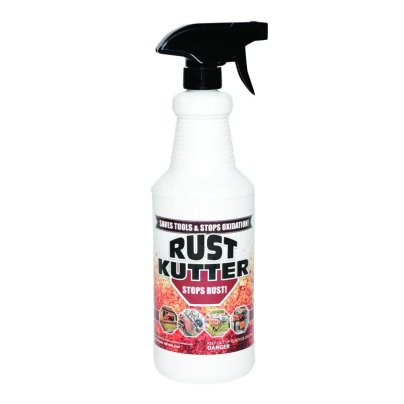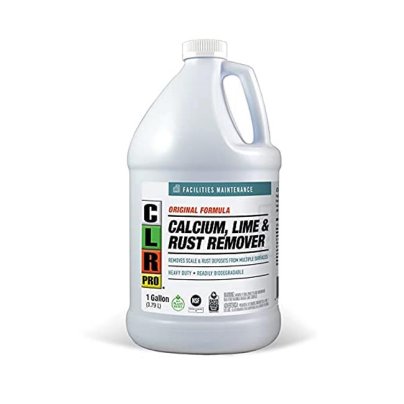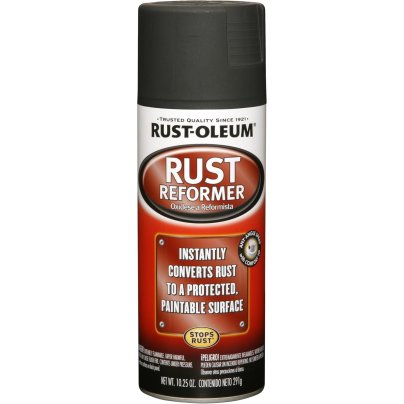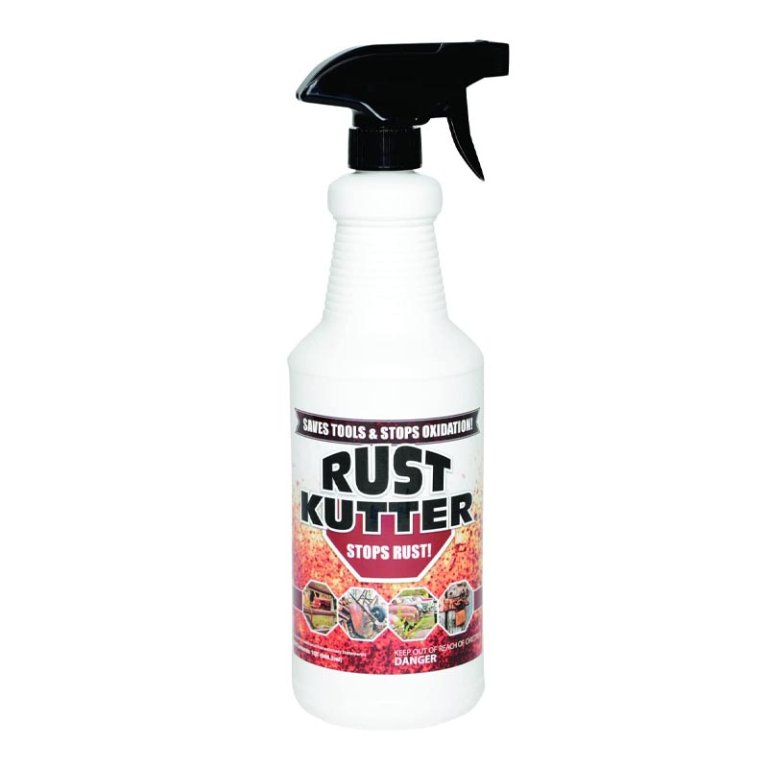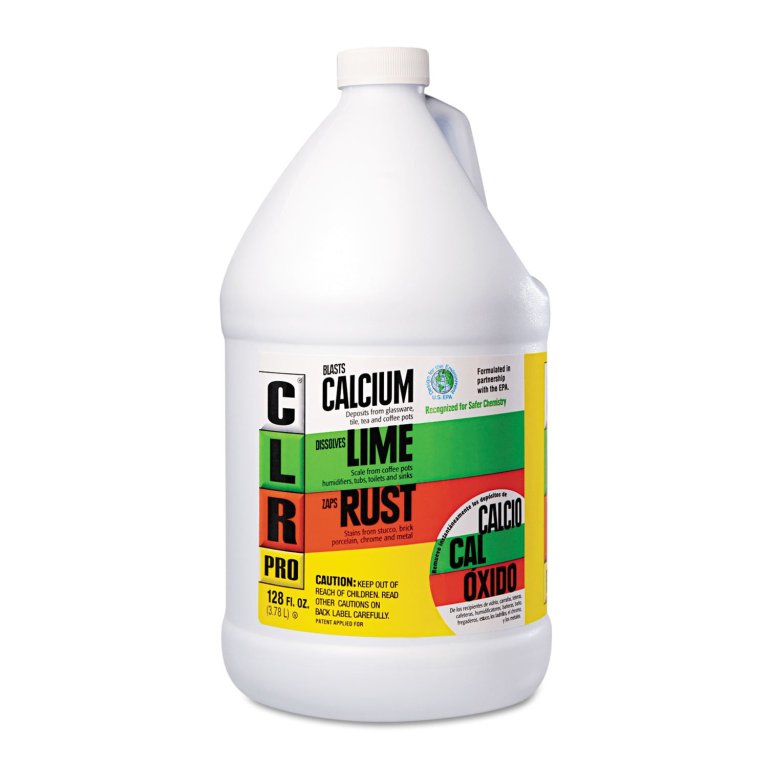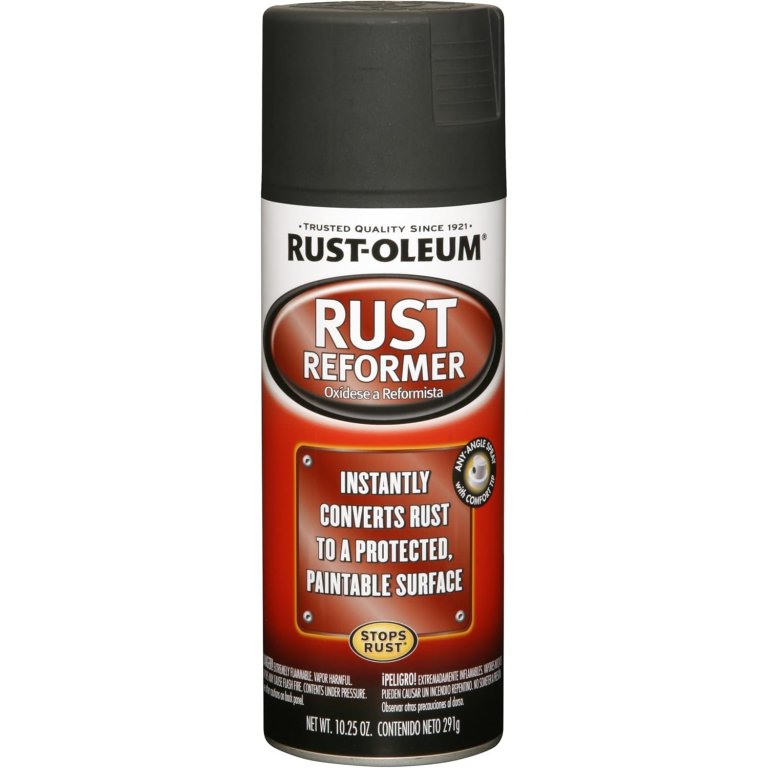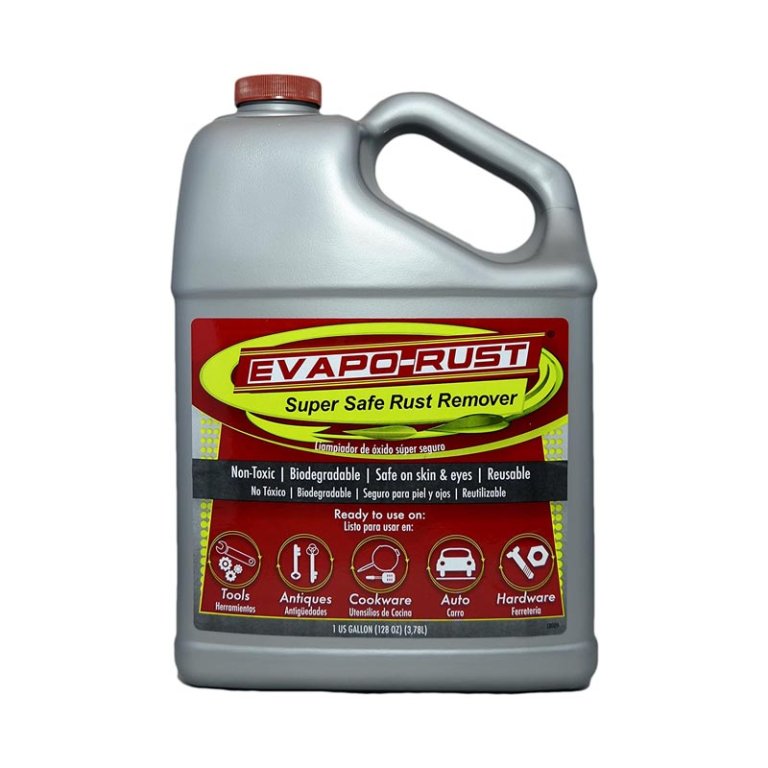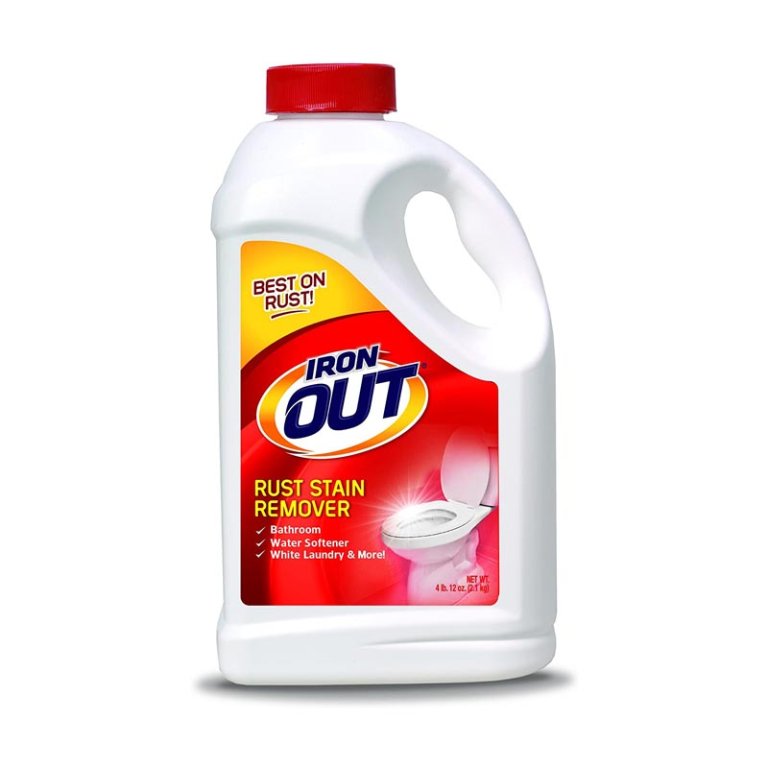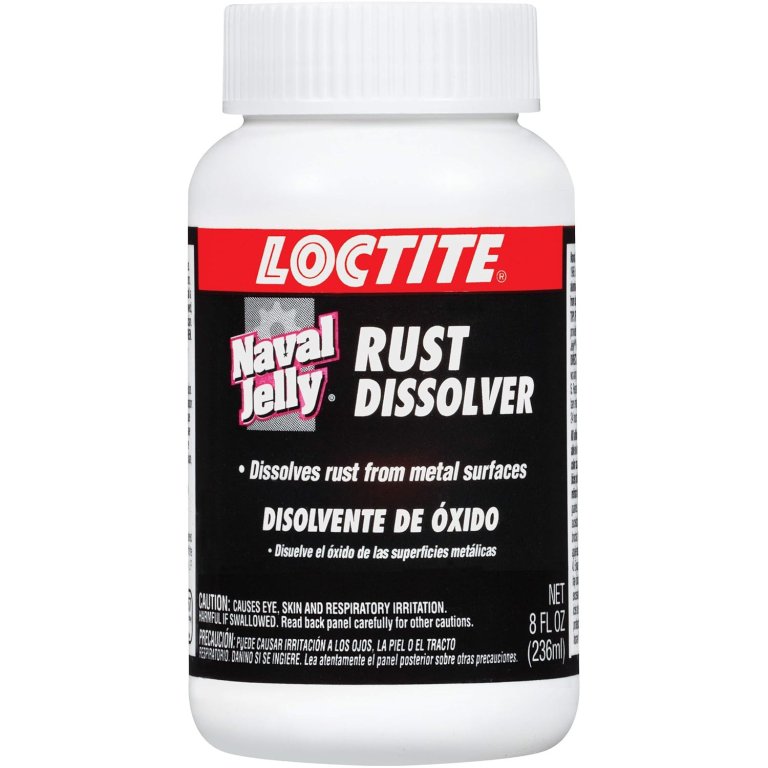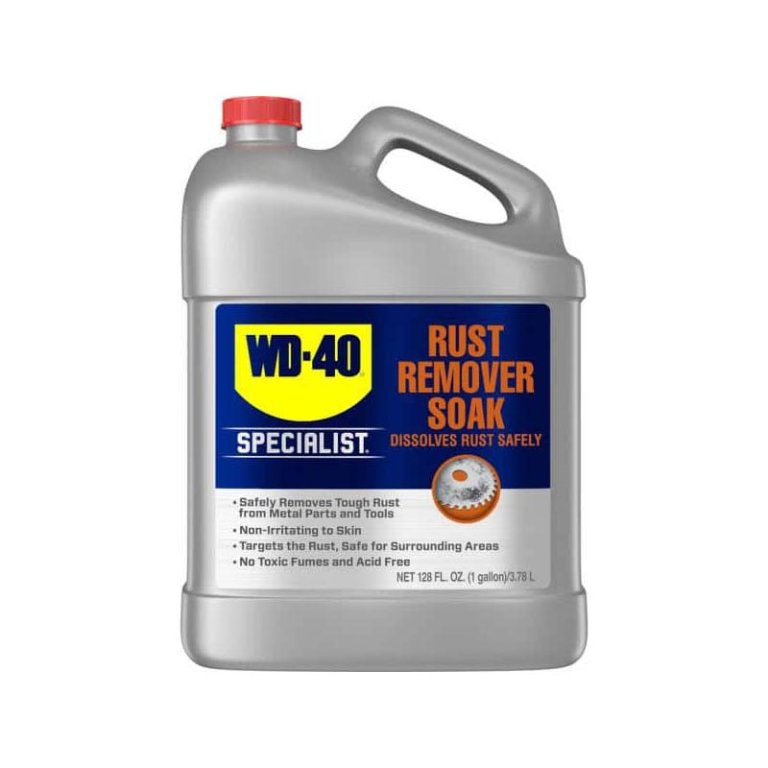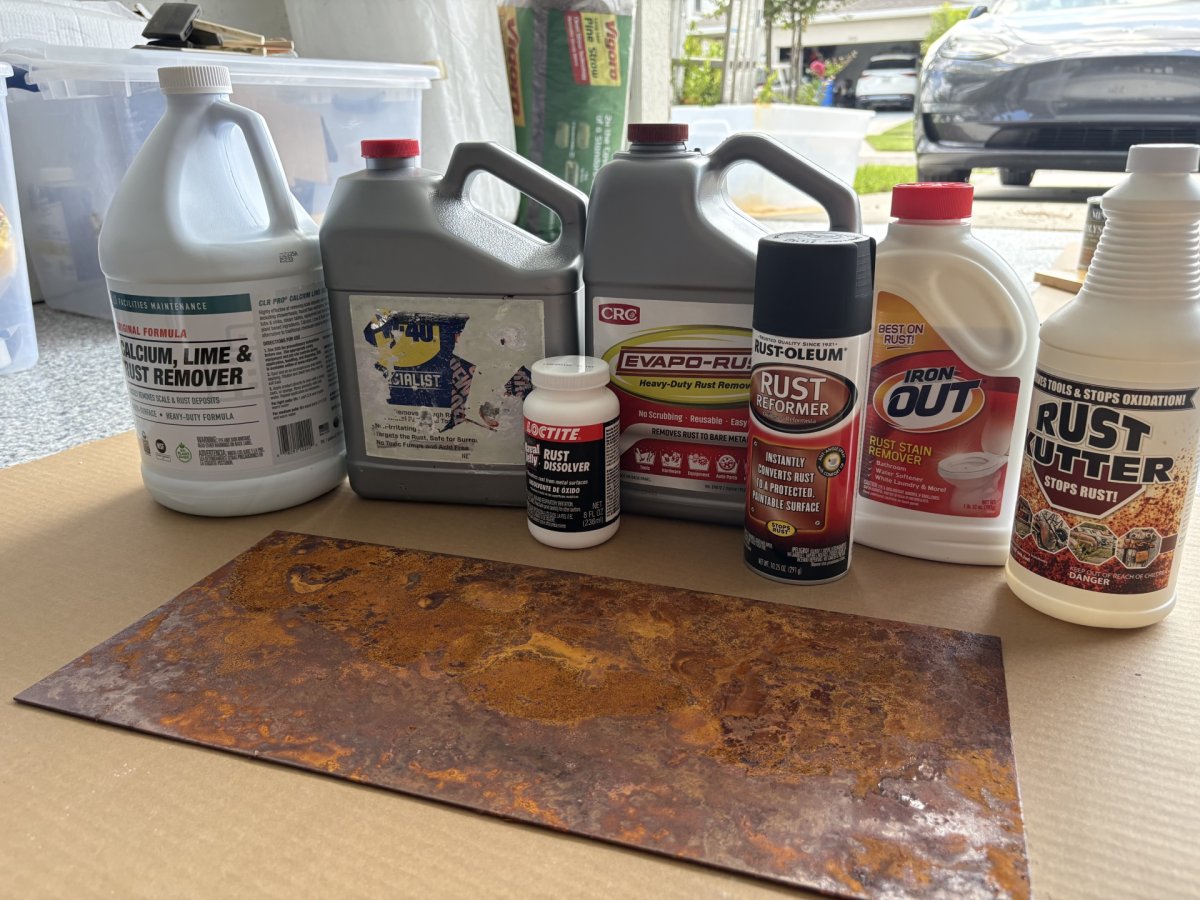
We may earn revenue from the products available on this page and participate in affiliate programs. Learn More ›
When elbow grease fails to remove rust, it’s time to reach for a rust remover. To find out which ones are worth buying, we tested seven leading products on real metal surfaces, including tools and steel plates. During hands-on testing, we noted how quickly each product worked, how easy it was to apply, and how well it prevented rust from coming back.
A good rust remover can save time, extend the life of tools, and restore household or automotive parts that might otherwise be headed for the trash. Not all formulas are created equal, though—some require heavy scrubbing or harsh chemicals, while others work with minimal effort. Our top recommendation is Rust Kutter, an easy-to-use spray that dissolved rust right before our eyes while leaving behind a protective coating to slow future corrosion.
Whether you need to rescue a set of garden shears, clean up rusted hardware, or maintain car parts, there’s a product that can make the job easier. Ahead, we’ll break down what to look for in the best rust remover, plus our full test results.
- BEST OVERALL: Rust Kutter
↓ Jump to Review - BEST MULTIPURPOSE: CLR PRO Calcium, Lime and Rust Remover
↓ Jump to Review - BEST AEROSOL: Rust-Oleum Rust Reformer
↓ Jump to Review - BEST FOR TOOLS: Evapo-Rust ER102 Super Safe Rust Remover
↓ Jump to Review - BEST FOR HOUSEHOLD NEEDS: Iron Out Powder Rust Stain Remover
↓ Jump to Review - BEST HEAVY DUTY: Loctite Naval Jelly
↓ Jump to Review - BEST FOR CARS: WD-40 Specialist Rust Remover Soak
↓ Jump to Review
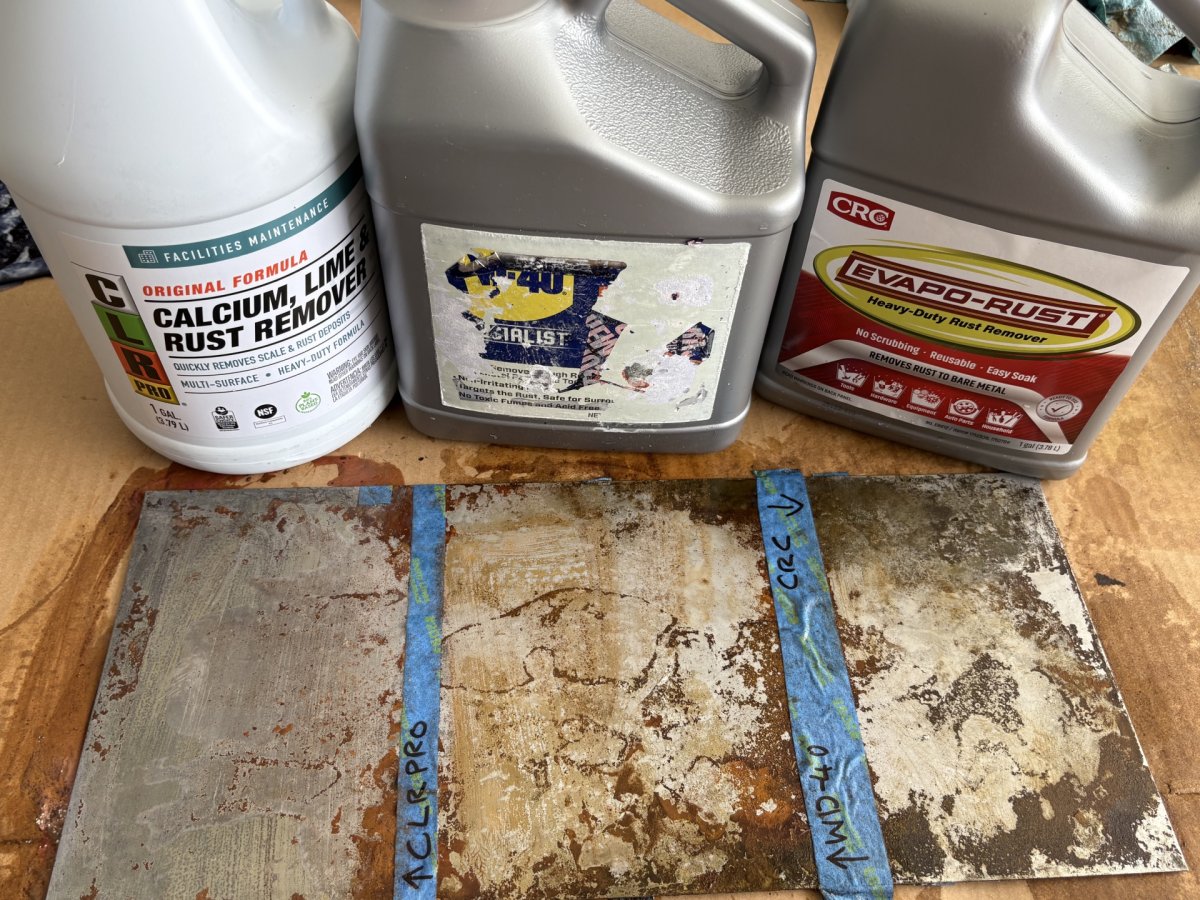
Before You Buy Rust Remover
Before attempting the chemical process of rust removal, it helps to understand just what rust is in the first place. Basically, iron corrodes when it is exposed to oxygen and moisture (water or humidity), the technical term for the process being oxidation.
When iron molecules are oxidized, they form an orangey-red residue (rust) on any surface containing—or in contact with—iron, including clothes, tools, household faucets, shower caddies, and the chrome fixtures on cars and bicycles. Rust stains are difficult to remove because of their bright color and stubborn resistance to typical cleaners like bleach and soap, which is why we’ve rounded up our top picks for the best rust removers on the market.
Rust removers aren’t good for delicates like wool or silk, but for most other surfaces, you’ll find your solution below.
Rust Removers Comparison
| Product | Type | Eco-friendly | Precautions |
| Rust Kutter | Liquid spray | No | Wear gloves, work in a well-ventilated area |
| CLR Pro Calcium, Lime and Rust Remover | Liquid | Yes | Wear gloves |
| Rust-Oleum Rust Reformer | Aerosol spray | No | Gloves, goggles, and mask recommended |
| Evapo-Rust ER012 Super Safe Rust Remover | Liquid | Yes | Wear gloves, wash thoroughly after handling |
| Iron Out Powder Rust Stain Remover | Powder | No | Wear gloves, work in a well-ventilated area |
| Loctite Naval Jelly | Phosphoric acid | No | Gloves and face/eyes protection |
| WD-40 Specialist Rust Remover Soak | Liquid | Yes | Wear gloves |
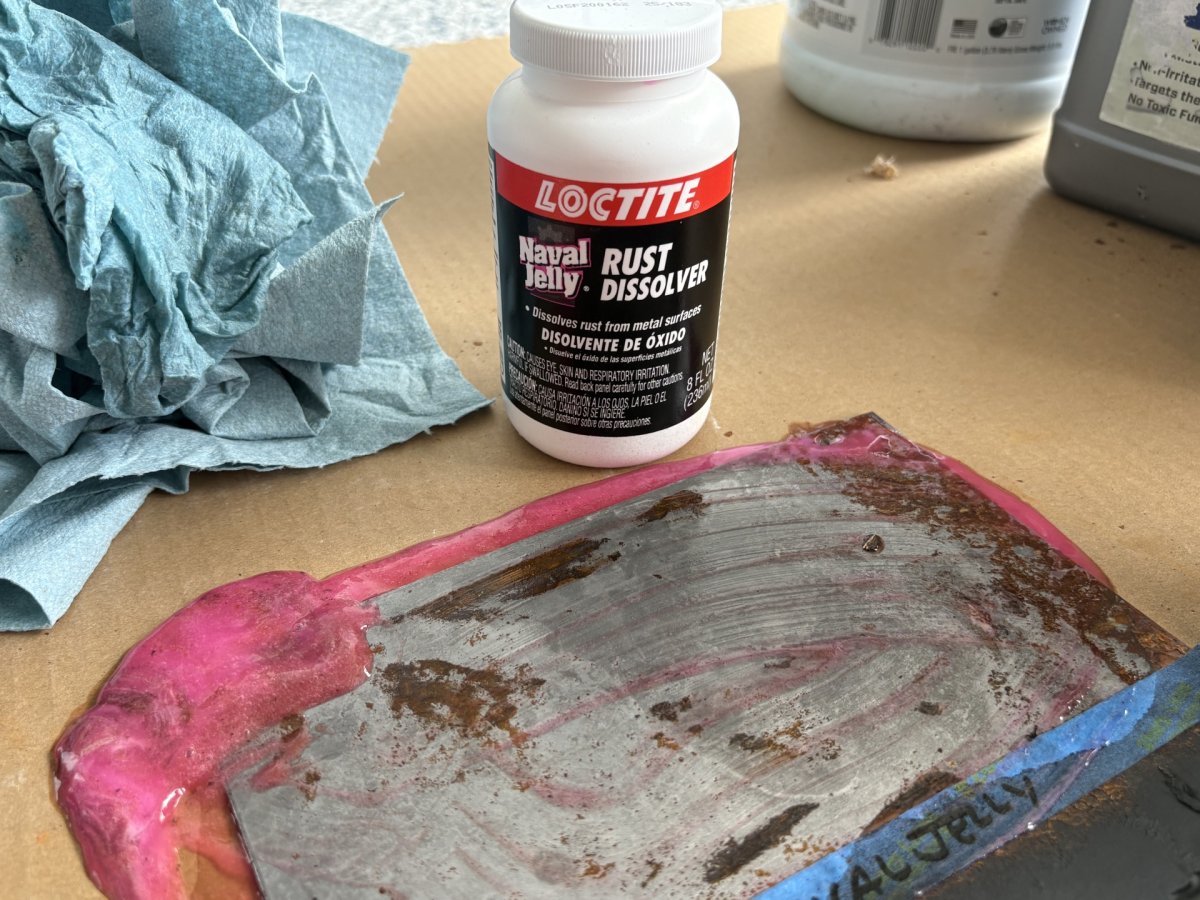
Our Top Picks
Having had the chance to read about various technical aspects of different rust removers, it is now time to look at some practical examples. The following represent a broad spectrum of possible solutions, allowing you to quickly find the best rust remover for a particular task.
Best Overall
Photo: AmazonWhat We Like
- Extremely easy to use; spray and wipe
- Works almost instantly to remove rust from metal
- Doubles as a rust converter for painting projects
- Suitable for multiple interior and exterior surfaces
What We Don’t Like
- Leaves a whitish hue on bare metal
- Cannot be used on painted surfaces without risking damage
- Requires protective gear and good ventilation
Product Specs
- Type: Liquid spray
- Eco-Friendly: No
- Precautions: Wear gloves, work in a well-ventilated area
Our Ratings
| Ease of Use | 5/5 | Effectiveness | 5/5 | Value | 5/5 |
Rust Kutter impressed us right out of the gate. This spray-on formula is designed to both remove rust and convert it into a primer-ready surface, making it especially useful for projects that require painting afterward. During testing, it proved to be one of the easiest and most effective products we tried. As soon as we sprayed it on, we could see it going to work, breaking down rust almost instantly. When left to sit for a short period, the spray continued eating away at corrosion, and a quick wipe revealed bare, clean metal underneath.
The product dries in about 30 minutes and can be used on a wide variety of surfaces, including tools, tile, marble, and masonry. Like other acid-based rust removers, Rust Kutter requires proper safety precautions—protective gloves, eye protection, and good ventilation are a must. It’s also worth noting that the converted rust may leave metals with a whitish tint, which is ideal for items you plan to paint but less desirable for exposed decorative metal.
Overall, Rust Kutter stood out in testing as a reliable, fast-acting solution that made the rust practically disappear before our eyes.
What our tester says: “When I sprayed Rust Kutter on, I couldn’t believe how fast it worked—the rust just melted away right in front of me.”—Paul Rankin, Product Reviews tester and writer.
Get the Rust Kutter rust remover at Amazon or Tractor Supply Co..
Best Multipurpose
Photo: AmazonWhat We Like
- Extremely fast-acting
- Budget-friendly
- Versatile on many surfaces
- Easy to apply and wipe away
- No strong odor
What We Don’t Like
- Thin liquid consistency may run on vertical surfaces
- Requires gloves and eye protection during use
Product Specs
- Type: Liquid
- Eco-Friendly: Yes
- Precautions: Wear gloves
Our Ratings
| Ease of Use | 4.5/5 | Effectiveness | 5/5 | Value | 5/5 |
CLR Pro is marketed as an industrial-strength cleaner, but it also happens to be one of the most budget-friendly rust removers we tested—and it doesn’t cut corners on performance. This thin liquid formula combines lactic and gluconic acids, which are less caustic than some harsher acid blends, yet it still packs serious cleaning power.
During testing, CLR Pro blew us away with its speed and effectiveness. As soon as we splashed some onto rusty metal, the corrosion seemed to melt away. Within seconds, a quick wipe revealed fresh, clean metal with minimal effort required. Not only was it the fastest-working formula in our lineup, but it also created very little mess and had no overpowering chemical odor, making it pleasant to use indoors or outdoors. Its versatility is another bonus—it works on tools, car parts, outdoor equipment, tile, sinks, toilets, and more.
For those looking for a budget-friendly rust dissolver that delivers immediate, professional-level results, CLR Pro is a standout choice.
What our tester says: “CLR Pro was like magic—the moment it hit the rust, it disappeared. I wiped it away and was left with clean, fresh metal almost instantly.”—Paul Rankin, Product Reviews tester and writer.
Get the CLR Pro rust remover at Amazon, Lowe’s, The Home Depot, or Walmart.
Best Aerosol
Photo: AmazonWhat We Like
- Fast-drying rust remover spray
- Converts rust and prevents further corrosion
- Creates a black, paintable surface
- Any-angle nozzle for hard-to-reach areas
What We Don’t Like
- Very strong odor—requires outdoor use and a mask
- Does not dissolve rust visibly, only converts it underneath
- Oil-based formula unsuitable for non-metallic surfaces
Product Specs
- Type: Aerosol spray
- Eco-friendly: No
- Precautions: Gloves, goggles, and mask recommended
Our Ratings
| Ease of Use | 4.5/5 | Effectiveness | 5/5 | Value | 5/5 |
For convenience and ease of use, few products beat the simplicity of an aerosol can, and that’s exactly what the Rust Oleum Rust Remover is. It’s designed to simplify rust treatment by instantly converting rust into a flat black paintable surface. The oil-based formula bonds directly with the corroded metal, sealing the rust beneath and preventing future corrosion. It dries tack-free in as little as 20 to 40 minutes, and after 24 hours, the surface is ready for a topcoat. The any-angle spray nozzle makes it easy to reach tricky spots, even spraying upside down.
In testing, this product felt more like applying black spray paint than removing rust outright. That’s because it works by covering and converting the rust beneath the coating, effectively hiding corrosion while prepping the surface for painting. The spray application was quick and convenient, producing an even coat with little effort. However, the smell was very strong, so we recommend using it outdoors while wearing a mask. While it won’t dissolve rust visibly, it’s a smart choice for projects where sealing rust and creating a primer-ready base are more important than bare-metal restoration.
Get the Rust-Oleum rust remover at Amazon, Lowe’s, The Home Depot, Walmart, or Harbor Freight.
Best for Tools
Photo: AmazonWhat We Like
- Environmentally safe and non-toxic rust remover
- Effective on a wide range of materials
- Removes rust quickly, especially when soaking tools
- No harsh odor or corrosive ingredients
What We Don’t Like
- Works best for items that can be fully submerged
- Requires longer soak times for heavy rust
Product Specs
- Type: Liquid
- Eco-Friendly: Yes
- Precautions: Wear gloves, wash thoroughly after handling
Our Ratings
| Ease of Use | 5/5 | Effectiveness | 4.2/5 | Value | 4.7/5 |
Evapo-Rust has been around for years as one of the original water-based, nontoxic rust removers on the market. Unlike harsher acid-based formulas, this remover is environmentally friendly, biodegradable, and noncorrosive, making it safe for use on skin, eyes, and even around pets. It can also be used safely on non-rusty steel, plastics, PVC, cast-iron cookware, toys, and painted surfaces that might come into contact with rusty metal.
During testing, Evapo-Rust reminded us a lot of CLR Pro in terms of performance, though it worked just a bit slower. While it wasn’t quite as instant as CLR, it was still impressively fast. Submerging rusty tools or drill bits in a bath of Evapo-Rust made quick work of corrosion, usually within a few minutes. For heavier jobs, soaking overnight ensures a full clean without scrubbing. It’s a particularly good option for small items that can be fully immersed, since the liquid penetrates all surfaces evenly.
For users who want a safe, reusable formula that’s tough on rust without tough odors or harsh chemicals, Evapo-Rust is a dependable choice.
Get the Evapo-Rust rust remover at Amazon, Ace Hardware, or Harbor Freight.
Best for Household Needs
Photo: AmazonWhat We Like
- Gentle, septic-safe powder
- Effective for bathrooms, kitchens, and laundry
- Helps maintain appliances like water softeners and washing machines
- Fizzing action starts working immediately when mixed with water
What We Don’t Like
- Needs scrubbing for best results
- Not as heavy-duty as liquid removers for thick rust
Product Specs
- Type: Powder
- Eco-Friendly: No
- Precautions: Wear gloves, work in a well-ventilated area
Our Ratings
| Ease of Use | 4/5 | Effectiveness | 3.8/5 | Value | 4/5 |
Iron Out Powder Rust Stain Remover is designed with household use in mind. Unlike harsher acid-based formulas, this septic-safe powder relies on sodium metabisulfite and sodium hydrosulfite crystals to erase rust stains in kitchens, bathrooms, and laundry rooms. It’s especially handy for homes with hard water and high iron content, where it can help prevent buildup inside plumbing, water softeners, and washing machines while also removing rust stains from sinks, tubs, tile, and even clothing.
When we tested it on the same sheet metal as the other removers, it held its own—even though that’s not its primary purpose. Once mixed with a bit of water, the powder immediately began fizzing on contact with rust, loosening corrosion as we scrubbed. A little more effort was required compared with liquid sprays, but after some elbow grease, the sheet metal was left clean again. For lighter, everyday rust problems around the house, this formula is effective without being overly harsh.
Best Heavy Duty
Photo: AmazonWhat We Like
- Extremely effective on heavy rust
- Thick jelly clings to vertical surfaces
- Works in as little as 5 to 10 minutes
- Easy cleanup with water
- Affordable price
What We Don’t Like
- Requires protective gloves and good ventilation
- Not as convenient as spray-on formulas for light jobs
Product Specs
- Type: Phosphoric acid
- Eco-Friendly: No
- Precautions: Gloves and face/eyes protection
Our Ratings
| Ease of Use | 5/5 | Effectiveness | 5/5 | Value | 5/5 |
Loctite Naval Jelly is a heavy-duty rust remover designed for tough jobs, and it’s easy to see why it’s a go-to product for heavily corroded surfaces. Sold in a small, budget-friendly plastic tub, this bright pink jelly is as visually striking as it is effective. The thick consistency makes it ideal for clinging to vertical or hard-to-reach surfaces, where liquid formulas might simply run off. It can be brushed or sprayed onto large or small areas, and cleanup is as simple as rinsing with water.
In testing, Naval Jelly quickly proved itself one of the most powerful rust removers we tried. As soon as it was applied, we could see it starting to work, breaking down corrosion on contact. Its thickness allowed it to sit on the rusted sheet metal long enough to fully penetrate, and after just a few minutes, a wipe and rinse revealed a nearly spotless surface. On deeply rusted areas, leaving the jelly for up to 10 minutes produced dramatic results that other formulas struggled to match.
This product does have a stronger chemical profile, so gloves and ventilation are recommended, but for heavily rusted tools, hardware, or equipment, Loctite Naval Jelly is tough to beat. It’s affordable, easy to apply, and effective at restoring even badly corroded metal.
Get the Loctite Naval Jelly rust remover at Amazon, Ace Hardware, and Menard’s.
Best for Cars
Photo: The Home DepotWhat We Like
- Effective on large or heavily rusted items
- Ideal for automotive parts and restoration projects
- Fast-acting results with minimal effort
- Nontoxic formula with no harsh fumes
What We Don’t Like
- Requires items to be submerged for best results
- Thin liquid consistency isn’t ideal for vertical applications
Product Specs
- Type: Liquid
- Eco-Friendly: Yes
- Precautions: Wear gloves
Our Ratings
| Ease of Use | 5/5 | Effectiveness | 5/5 | Value | 5/5 |
WD-40 is a trusted name in lubrication and rust prevention, and its Specialist Rust Remover Soak is designed for bigger, more demanding jobs. This nontoxic, industrial-strength liquid is especially well-suited for auto restoration, where heavily rusted car parts can be submerged for a full cleaning. It also works on large outdoor structures like swing sets, gates, or shed hardware, restoring corroded metal without the need for scraping, chipping, or aggressive scrubbing.
In testing, this soak performed much like CLR Pro and Evapo-Rust, breaking down rust quickly and effectively. While it wasn’t quite as instant as CLR, it still worked at an impressive pace—fast enough to make rust vanish before our eyes with very little effort. Its thin liquid consistency makes it easy to pour into a container for soaking, and because it doesn’t produce harsh fumes, it’s relatively pleasant to use compared to some spray-on products. For larger or more deeply rusted items, leaving parts in the soak for several hours ensures a thorough clean.
For car owners, mechanics, or anyone with large rusted components, WD-40’s Specialist Rust Remover Soak is a dependable option that combines speed, safety, and the trusted reputation of the WD-40 brand.
Get the WD-40 rust remover at The Home Depot or Walmart.
Jump to Our Top Picks
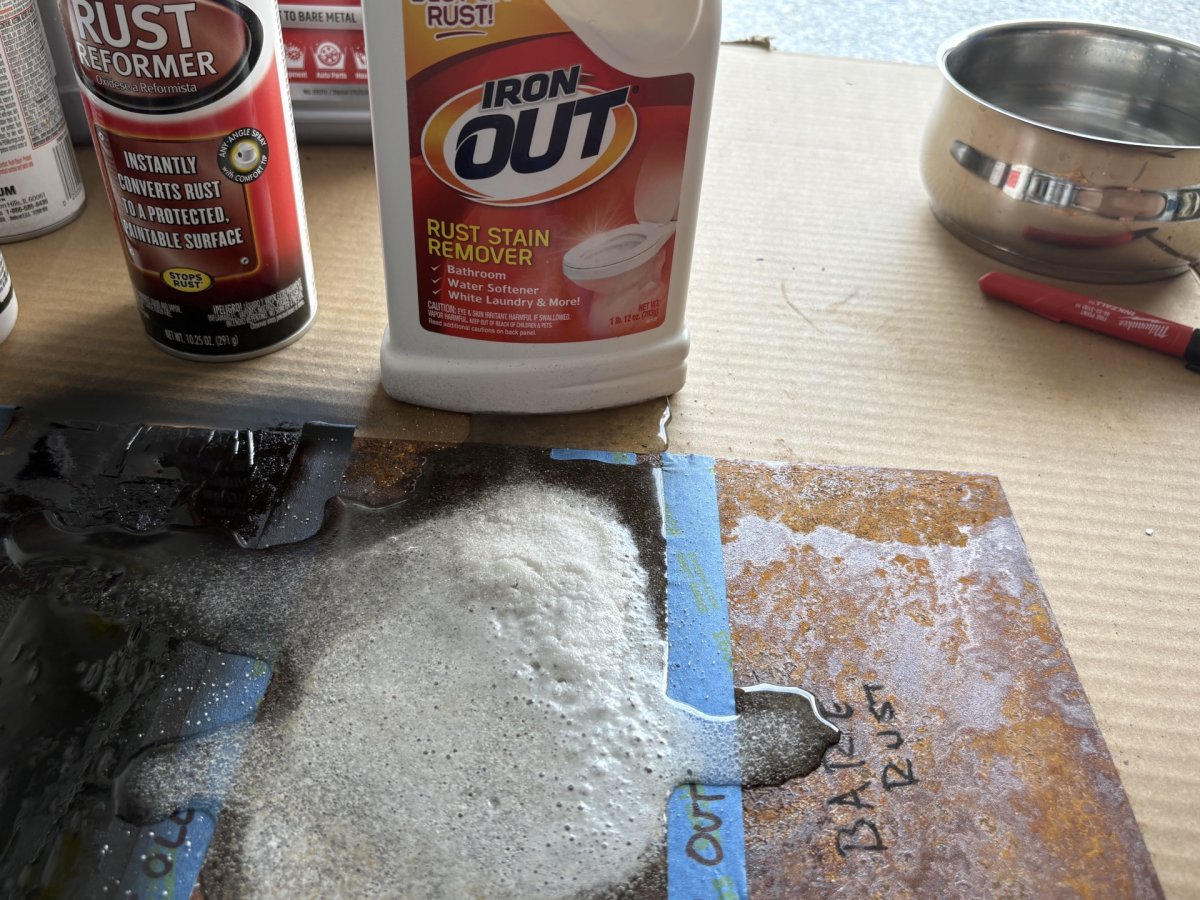
How We Tested the Best Rust Removers
| Testing Stats | |
| Products tested | 7 |
| Time spent testing | 1 month |
| Tests performed | 3 to 4 |
| Price range | $5 to $30 |
We evaluated seven different rust removers to determine which products truly work. Before testing, we researched dozens of options from leading brands, focusing on performance claims, safety, environmental impact, ease of use, and overall value. During hands-on testing, each remover was applied to rusted sheet metal as well as smaller tools to measure speed, effectiveness, and mess factor. We timed how long it took for rust to dissolve or convert, noted whether scrubbing was required, and compared how easily surfaces could be cleaned and repurposed afterward.
Where possible, we included products with eco-friendly or less caustic formulas, though some heavy-duty options were necessary for severe corrosion. We also weighed convenience—spray-on converters cost more but save time—against price and versatility. In the end, we selected a balanced mix of liquids, sprays, jellies, and powders to represent the full market and help readers choose the best rust remover for their needs.
| Product | Ease of Use | Effectiveness | Value | ||
| Rust Kutter | 5/5 | 5/5 | 5/5 | ||
| CLR Pro Calcium, Lime and Rust Remover | 4.5/5 | 5/5 | 5/5 | ||
| Rust-Oleum Rust Reformer | 4.5/5 | 5/5 | 5/5 | ||
| Evapo-Rust ER012 Super Safe Rust Remover | 5/5 | 4.2/5 | 4.7/5 | ||
| Iron Out Powder Rust Stain Remover | 4/5 | 3.8/5 | 4/5 | ||
| Loctite Naval Jelly | 4.5/5 | 5/5 | 5/5 | ||
| WD-40 Specialist Rust Remover Soak | 4/5 | 5/5 | 5/5 |
What to Consider When Choosing a Rust Remover
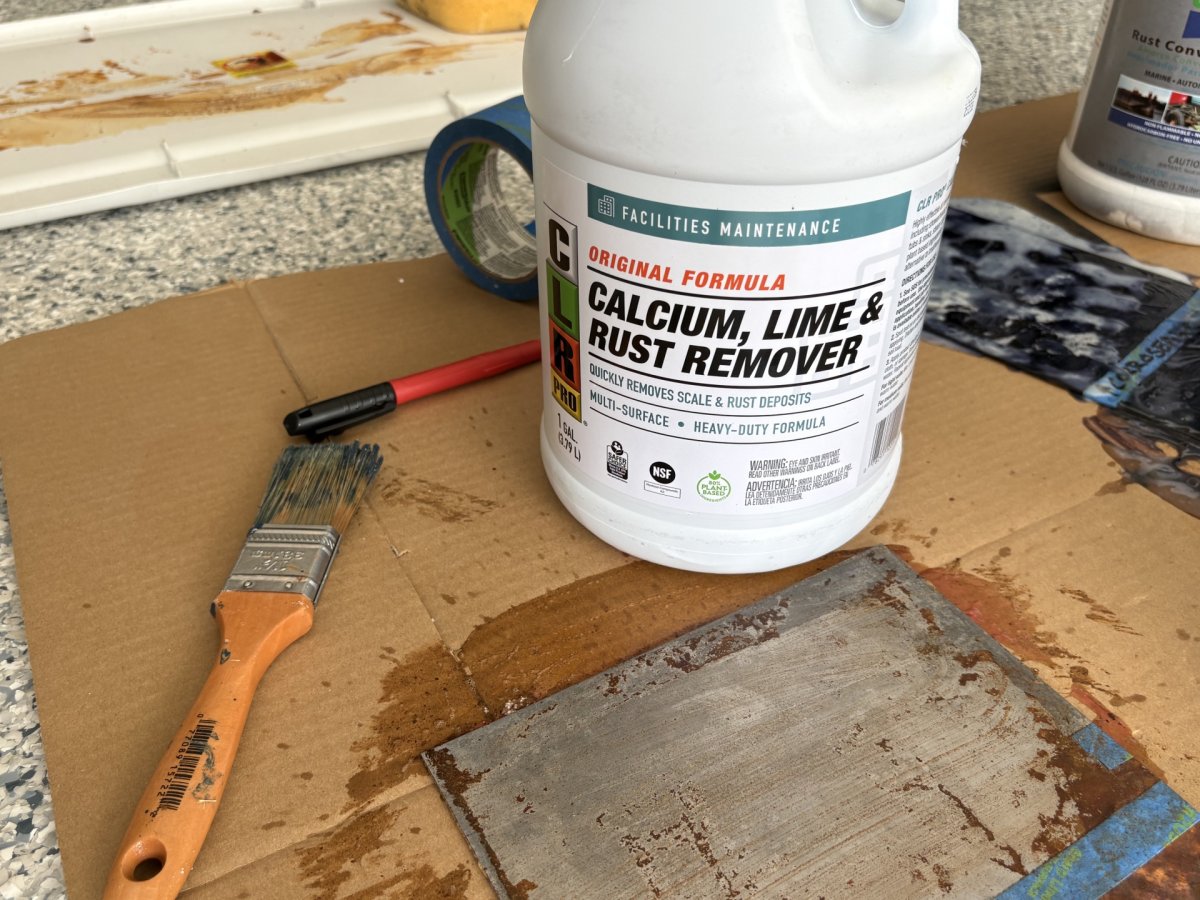
There are dozens of rust removal products and rust converters on the market. It can be difficult to know which is the best rust treatment for a particular material, and getting it wrong could result in as much harm as the rust is causing. The following section looks at types of rust removers, application methods, effectiveness, and safety in order to help you make an informed choice.
Types of Rust Removers
The best way to remove rust will vary depending on the type of material you’re working with, but if you start with the correct type of rust remover, you’re bound to get great results. The most common methods involve commercial-grade chemicals that eat away at rust buildup and stains, like acids and petroleum-based solvents. Here are the major types of rust removers and general guidelines for using them.
Acids
This category includes nitric acid, acetic acid (white vinegar), phosphoric acid, hydrochloric acid, sulfuric acid, muriatic acid, oxalic acid, and citric acid. The typical percentage of acid in a rust remover is about 30 percent—the maximum amount that can dissolve in water and serve as a cleaning agent. Though effective and fast, usually working within minutes of application, acids emit harsh chemical fumes, so you must use them in an outdoor or well-ventilated space and wear protective gear (goggles, face mask or respirator, and rubber gloves).
Acids also incur the risk of surface damage due to corrosiveness. Naval jelly, a phosphoric-acid-based, caustic rust remover, is suited for heavily rusted iron or steel but should not be used on delicate materials like fabrics or on aluminum, chrome, stainless steel, cement, fiberglass, marble, plastics, or painted surfaces (it will remove paint). On the plus side, naval jelly gets rid of rust buildup in about 5 to 10 minutes, and any excess product can be removed and the area cleaned with water.
Sodium Hydrosulfite
Sodium hydrosulfite is an active ingredient often found in powdered rust removers. This salt compound is effective in removing rust stains from fabric. Research from the U.S. General Services Administration also shows its power to remove rust stains from concrete, limestone, and marble. In home cleaning products, sodium hydrosulfite eliminates the need for scrubbing away stains and can be used in bathrooms, toilets, kitchens, and washing machines. Expect rust stains to fade within 5 to 30 minutes after application.
Petroleum-Based Solvents
Petroleum-based solvents are found in products like WD-40. While not as corrosive or toxic as acids, these products often use pressurized gases for dispersal. Note that pressurized gases are flammable and may have respiratory risks. You can expect to wait up to 24 hours for these products to take full effect.
Chelating Agents
Newer rust removers are non-toxic, acid-free, and eco-friendly, relying on a process of chemical chelation. The product’s molecules bind to the rust particles, making it easier to wipe away rust without damaging surrounding materials. Typically, these products require you to soak rusty items for a minimum of 30 minutes to overnight—time well spent that results in rust-free, stain-free tools and surfaces.
Rust Converters
When there is too much rust for either a chemical or chelating product to completely remove the buildup, use a product that converts rust into a stable black coating that serves a dual purpose: it protects the original surface and works as a primer for oil- and epoxy-based paints.
This type of rust remover is handy but doesn’t work on stainless or galvanized steel (the best rust remover for metal is an acid, sodium hydrosulfite, or petroleum-based solvent). However, rust converters are suitable for any iron or steel object that can be repainted, like garden tools, lawn equipment, fences, and iron railings. After applying, wait 24 hours before applying a second coat and a full 48 hours before painting over the rusted area.
Surface Compatibility
Choosing the right rust remover will often depend on the surface you need to treat. While heavy-duty, acid-based formulas are great at tackling thick corrosion on iron or steel, they can cause serious damage to delicate materials like aluminum, chrome, fiberglass, or marble. Using the wrong product can strip paint, etch surfaces, or weaken finishes.
- For household tasks—like rust stains on sinks, tubs, toilets, or fabrics—powdered or water-based formulas are typically safer and more effective. These gentler removers lift stains without harming porcelain, tile, or fabric fibers.
- Automotive parts, tools, and outdoor hardware often benefit from liquid soaks, sprays, or gels that are formulated specifically for metal.
- For painted or paint-ready steel, rust converters are another useful option, though they’re not suitable for stainless or galvanized metals.
Always check the manufacturer’s guidelines before applying a product, and when in doubt, test a small inconspicuous area first. Matching the remover to the correct surface not only improves results but also prevents accidental damage.
Form
Naval jelly usually comes as a ready-to-use gel. Spray-on rust remover can also be supplied as a thin gel, but it is frequently a liquid. The advantage of the former is that it clings better to metal surfaces. Rust converters are often supplied in spray bottles but also as aerosols. The latter are very convenient, but most are comparatively expensive.
Liquid rust removers are common and often very economical. Depending on type they can be brushed or wiped on with a rag or used with a spray bottle. Other liquid rust removers are intended as a soak. Simply find an appropriate container, fill it, and immerse the item to be cleaned. This requires little or no effort, but the cleaning process can take longer.
Rust remover powder is another cost-effective option. These are usually used for fabrics and ceramics rather than for metals. Some also work on concrete and cement. The powder can either be applied directly to the rust stain with a sponge or cloth, or dissolved in water. The resulting solution can be rubbed on and rinsed off or used as a soak.
Strength and Future Protection
Naval jelly is very strong but also caustic and quite unpleasant to work with; there are plenty of alternatives that are safer and easier to use. They can also be equally effective, though they take longer to work. We’ll look at relative timings in a moment.
With minor rust stains on clothing and other fabrics, it is best to avoid strong rust removers. The same may be true of rust on kitchen and bathroom ceramics, which may be better treated with an all-purpose cleaner. It’s important to choose the most appropriate product rather than the strongest. Our top picks offer a variety of examples.
Future protection relates to rust removers and rust converters used for cars, tools, and other hardware. Some manufacturers claim that their product prevents rust from reforming, ever. This is often true for rust converters that have changed the chemical composition of the rust. Rust removers often state a specific period of ongoing protection. However, any untreated steel will rust eventually, so some kind of paint or other coating will need to be applied to prevent this.
Cleanup and Drying Time
Once the rust remover has been applied, there will be a waiting period while it works. This can vary from 5 or 10 minutes, in the case of the strongest rust removers, to several hours in other cases. Following the correct procedure is vital. Left too long, these products can cause damage to the underlying structure, whether it’s metal, ceramic, or fabric. Sometimes two applications are required. It is better to do that than risk damage by leaving an item for too long.
Once the suggested time has elapsed, the residue may need to be removed. With rust converters, however, this is often unnecessary. Rust remover liquids and powders often need to be rinsed in water. Care needs to be taken here, as the resulting waste might be unsuitable for simply pouring down the drain. The product manufacturer should provide instructions. It’s important to follow them, as incorrect disposal could be illegal.
Safety
Very strong rust removers are acidic; failure to read instructions can result in sickness or injury. They can not only burn skin but also produce fumes that can irritate eyes and airways.
Less powerful rust removers might also require caution, and the use of gloves and goggles is often recommended. It may also be advisable to work in a well-ventilated area.
It’s important to understand that a rust remover that is environmentally friendly isn’t necessarily harmless. While nontoxic rust remover is available, details need to be checked carefully. Some are toxic in liquid form but safe when dry, for example. It is absolutely vital to read the manufacturer’s directions to avoid the risk of burns, respiratory irritation, eye injury, etc.
FAQs
The article above provides a wealth of valuable information about rust removers and converters. Many of the questions that arise have been answered, but for convenience we have covered the most common ones here.
A rust remover lifts away surface rust and can often be brushed or rinsed off. A rust converter changes the chemical composition of the rust into a stable form that can often be sanded and repainted.
It depends on the material being treated and what you want to do with it.
For fabrics, tile, and stone and to clean rust off metal tools or components, a rust remover should be used. For auto body, machinery, or tool repair, you may want to use a rust converter, although bear in mind the resulting material will not have the strength of the original steel.
Moisture and air attack unprotected or damaged metal, and then creep along as the surface deteriorates. If it’s caught early enough, repair and refinishing can usually rectify the problem.
Standard WD-40 can certainly loosen rust on metal, though results on other surfaces are difficult to predict. As a WD-40 alternative, we would generally recommend a dedicated rust remover specific to the material being treated.
Choosing the single strongest rust remover is difficult because results depend on the material being treated. Naval jelly is very strong but has to be used with great care. We prefer Evapo-Rust or WD-40 Specialist, which are safer but still hard to beat on tools, hardware, and auto parts.
Meet the Tester
Paul Rankin is a product tester and writer specializing in DIY, home improvement, and tool reviews. He brings a straightforward, testing-focused approach to evaluating products so readers can make confident choices.
Additional research provided by Andreana Lefton and Bob Beacham
